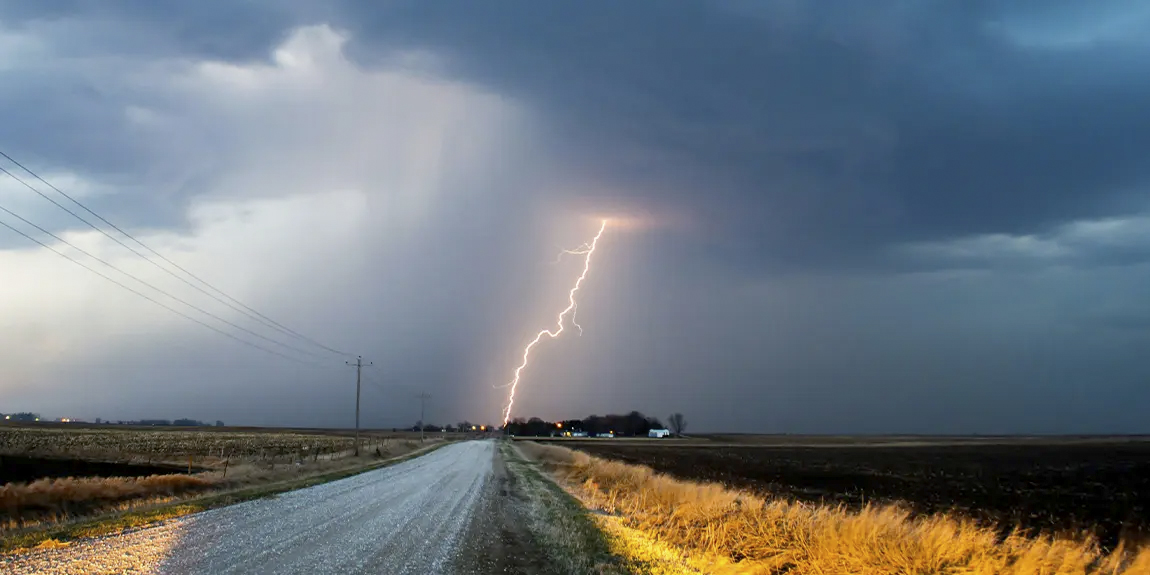How do forest fires start?

Every year, thousands of wildfires burn across the United States. The National Interagency Fire Center (NIFC) reported that 16,657 wildfires have occurred from June 4 to date in 2024; 1,968,698 acres have burned.
We have communicated before that Not all fires are badFire has a role to play within certain landscapes and ecosystems. It gets complicated because the last century of effective wildfire suppression has altered these landscapes so that fires burn at greater intensity. That, combined with the greater number of structures, creates a recipe for disaster. And unfortunately, most of these fires, about 87 percent of them, are initiated by activities related to people.
How do fires burn?
Before we learn more about how wildfires start, let’s first take a quick look at how a fire occurs in general. Fire is a chemical reaction that requires oxygen, heat, and fuel. These three components are often presented as the “fire triangle.”
Image: Gustavb via Wikimedia Commons
- Oxygen: Oxygen is important because it enables the chemical reaction. Most fires require at least a 16 percent oxygen concentration to burn; ambient air contains about 21 percent oxygen.
- Fuel: Any combustible material can act as fuel in the fire triangle. Through the lens of wildfire, these can be materials in the landscape, such as shrubs, trees, grass, and fallen debris. They can also be buildings and other infrastructure within communities.
- Heat: Heat plays a role in starting a fire, prolonging it and fueling its spread.
If we break any part of the fire triangle, the fire will not be able to continue.
How do forest fires start?
There are two groups to categorize how wildfires start: caused by people and caused by nature.
Forest fires caused by nature
Lightning is the primary agent of fires caused by natural causes. (There are some cases of volcanic activity causing forest fires, but this is limited.) While lightning is a force of nature that we cannot prevent, we can anticipate it, especially in areas that have regular or fairly predictable patterns of atmospheric discharges.
When I was on a wildland firefighting truck in Washington state, it was routine to fly a mission into Eastern Washington ahead of a thunderstorm. In the summer, it’s common for patterns to set up off the coast and work their way into Oregon and Washington. Sometimes these storms brought rain along with lightning, other times they didn’t. And even if they did bring moisture, it wouldn’t be enough to completely extinguish a fire. Even with rain, a lightning strike could start a small fire that would spread and creep along, waiting for temperatures to warm back up and fuels to dry out again, before becoming visible and needing attention a few days or even weeks later.
Fires caused by people
As I said at the beginning of this blog, most wildfires are caused by people or infrastructure related to people. These fires are usually accidental, but can be intentional (arson) or caused by negligence. Some examples include:
- Bonfires
- Burning backyard debris
- Use of equipment (lawnmower, chainsaw, etc.)
- Discarded cigarettes
- Vehicles (engine sparks)
- Fireworks
- Arson
Again, reflecting on my time as a wildland firefighter, many of the smaller daily activities involved responding to small fires caused by people – lots of campfires that got out of control and debris burns. It was often frustrating because federal, state and local fire departments and agencies spend so much time trying to engage their audiences in wildfire prevention efforts. The iconic bear Smokey Bear celebrates its 80th birthday this year and its message “Only you can prevent forest fires” still rings true.
Steps you can take
As we head into summer in the Northern Hemisphere and warmer, drier weather arrives, it's important for people to take steps to help firefighters and protect their communities. Don't be the source of a fire. Below are some safety tips to keep in mind:
- Follow all local burning regulations, burn bans, and open burning restrictions. These may apply to debris burning and campfires. Learn more by downloading this campfire safety tip sheet (in English) from the National Fire Protection Association (NFPA)®, National Fire Protection Association).
- Practice fire safety when using equipment such as lawn mowers, chainsaws, weed whackers, grinders, and tractors – all items that can throw sparks. CAL FIRE offers Tips for using fire-safe equipment and vehicles (in English).
- Make sure tow chains are properly connected and do not drag when pulling equipment or trailers behind a vehicle.
- Follow all local regulations regarding the use of fireworks. NFPA recommends leaving fireworks to professionals only. Learn more by downloading this safety tip sheet.
Source: https://www.nfpa.org/news-blogs-and-articles/blogs/2024/06/06/how-do-wildfires-start


